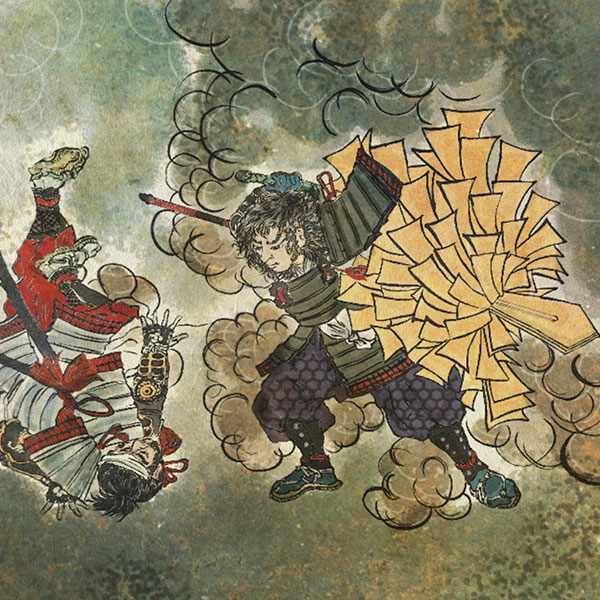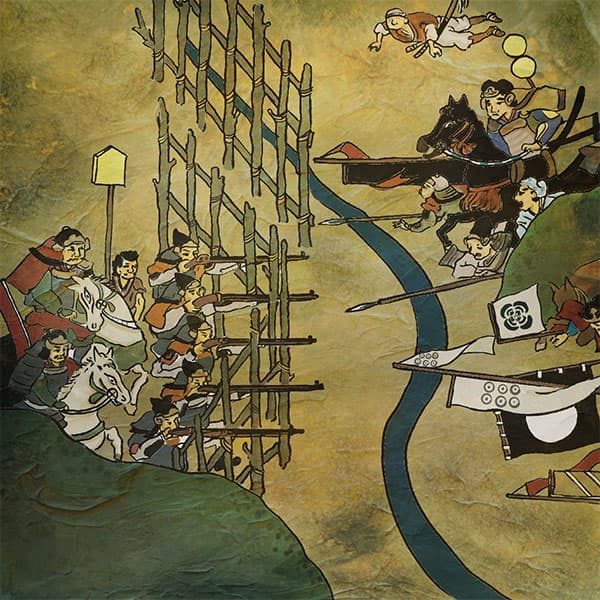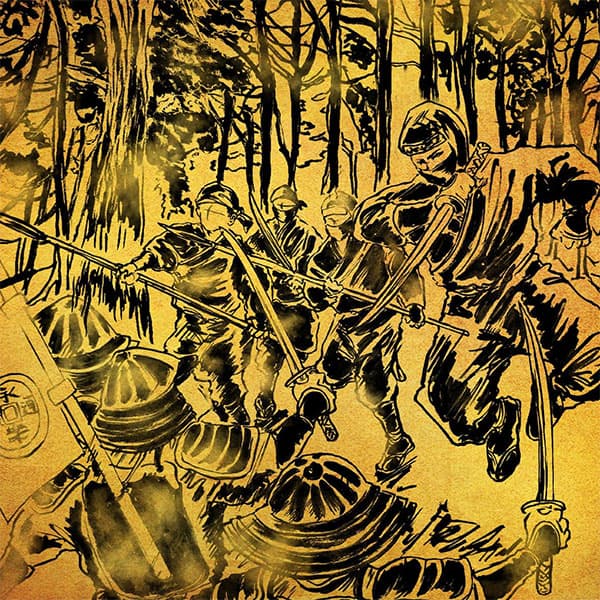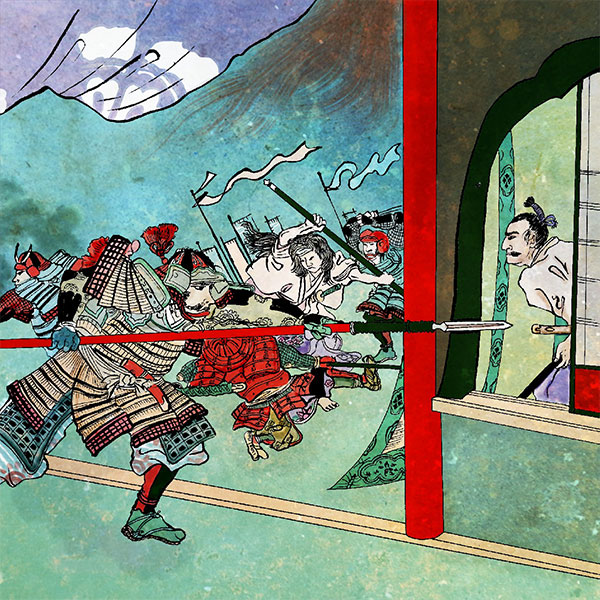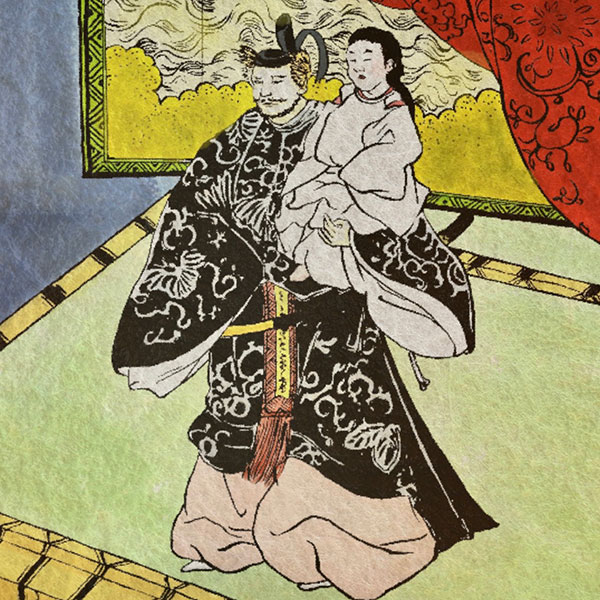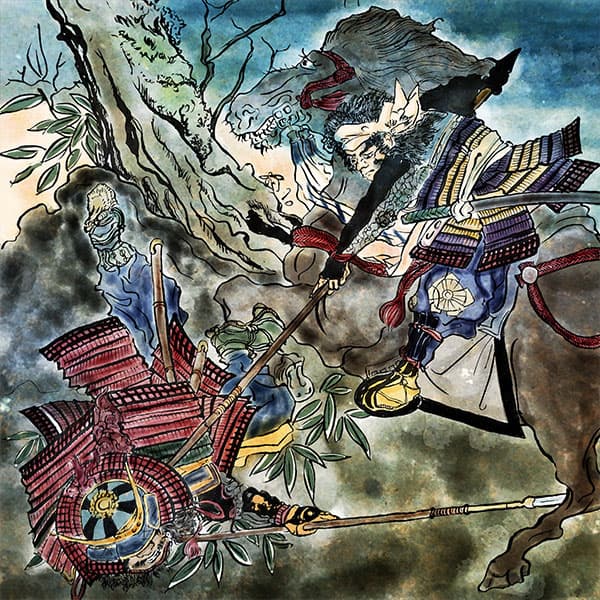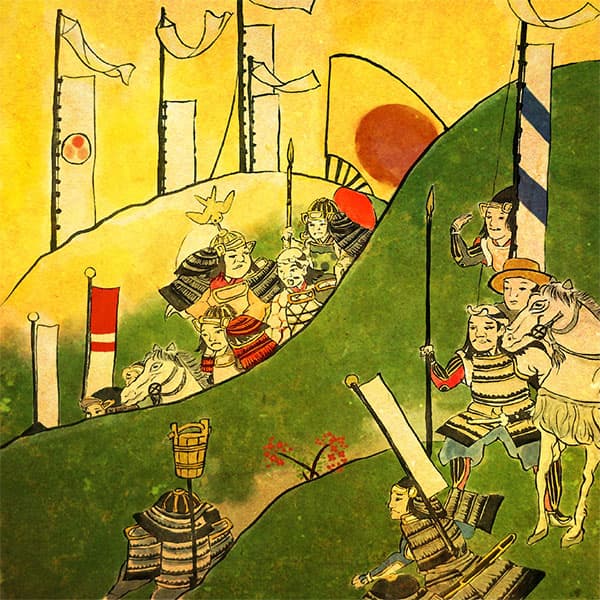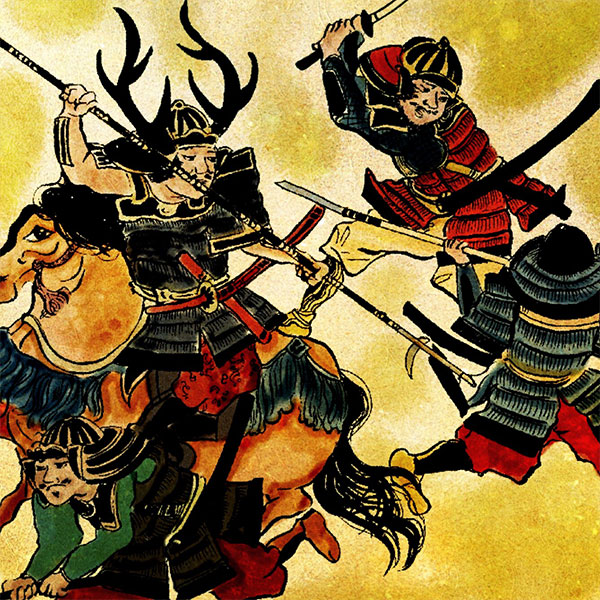Nobukatsu Oda (2/2)Head of the Oda clan after Nobunaga's death
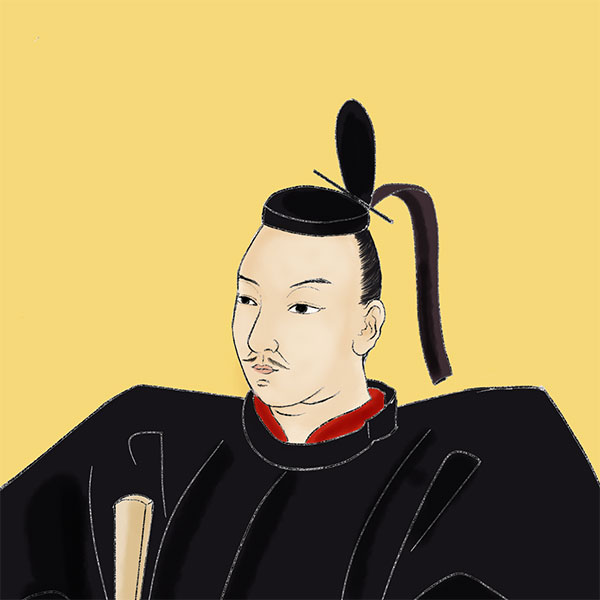
Nobuo Oda
- Article category
- biography
- name
- Nobukatsu Oda (1558-1630)
- place of birth
- Aichi prefecture
- Related castles, temples and shrines

Kiyosu Castle

Matsuzaka Castle
- related incident
In September 1583, Hideyoshi Hashiba built Osaka Castle and used it as a base from which to issue orders to the various feudal lords. Around this time, Hideyoshi began to treat Nobukatsu more lightly, and the relationship between Hideyoshi Hashiba and Ieyasu Oda deteriorated. Hideyoshi plotted to split off Nobukatsu's retainers, and Nobukatsu also allied with Ieyasu Tokugawa on the Tokaido. In March 1584, Hideyoshi Hashiba and Ieyasu Tokugawa entered into battle (Battle of Komaki and Nagakute). The battle favored the Tokugawa, but continued intermittently until the end of autumn. Hideyoshi realized that he was at a disadvantage and tried to make peace on terms favorable to himself, but it ended in failure. Still unable to give up, Hideyoshi focused on Oda Nobukatsu and pushed for peace, and Nobukatsu, who was tired of fighting, agreed. After this, the standoff between Hideyoshi Hashiba and Ieyasu Tokugawa continued, but Ieyasu eventually joined Hideyoshi's government.
Treatment and exile under the Toyotomi government
Oda Nobukatsu made peace with Toyotomi Hideyoshi. Although he remained the head of the Oda clan, he came under Toyotomi's administration. However, Hideyoshi did not treat him roughly, and in November 1587, he was promoted to Minister of the Interior. This made him the second highest ranking samurai after Hideyoshi, the regent, and higher than Hideyoshi's younger brother Hidenaga and the powerful Tokugawa Ieyasu. From then on, while he held the position of Minister of the Interior, he was called "Owari Minister of the Interior" or "Owari Naifu."
Thus, Oda Nobukatsu, who was under the Toyotomi government, had a territory of nearly 1 million koku centered in Owari Province, and held the rank of Minister of the Interior. This Oda Nobukatsu fell into decline.
Toyotomi Hideyoshi, who defeated the Hojo clan in Kanto in 1590 (Odawara Expedition), gave the Kanto region to Tokugawa Ieyasu. He then decided to give the former Tokugawa family territories to Oda Nobuo and take away his former territories in Owari Province. However, Nobuo, who was attached to Owari Province, the ancestral land of his family, refused. Hideyoshi became enraged and banished Oda Nobuo. For a time, Nobuo was imprisoned in Tohoku and Shikoku, and eventually shaved his head (from this time he took the title Joshin) and became one of Toyotomi Hideyoshi's Otogishu. Thus he served the Toyotomi government as one of Hideyoshi's Otogishu.
Treatment in the Edo Shogunate and later years
Toyotomi Hideyoshi died in 1598. After Hideyoshi's death, Tokugawa Ieyasu, the head of the samurai clan, and Ishida Mitsunari, the magistrate of the Toyotomi government, came into conflict. In 1600, the Battle of Sekigahara took place, and Oda Nobukatsu sided with Ishida Mitsunari. As a result, Tokugawa Ieyasu won, and Nobukatsu's retirement land was taken away, and he lived in seclusion in Osaka.
After Tokugawa Ieyasu won the Battle of Sekigahara, he became the ruler of Japan and was named Shogun. However, in Osaka, where Oda Nobuo was in seclusion, Toyotomi Hideyoshi's successor, Toyotomi Hideyori, was present. Hideyori's mother, Yodo-dono, was Nobuo's cousin, and the Toyotomi clan tried to lure Oda Nobuo, the head of the Oda clan, into their camp. Tokugawa Ieyasu also feared that if Nobuo, the head of the Oda clan, joined the Toyotomi clan, he would use his past influence to increase the power of the Toyotomi clan. So Ieyasu promised Nobuo land and prevented him from entering Osaka Castle.
In 1615, the first year of the Genna era, the Siege of Osaka took place and the Toyotomi clan was annihilated by the Tokugawa clan. Oda Nobukatsu was given territories including Uda District, Yamato Province (present-day Nara Prefecture) and Kanra District, Kozuke Province (present-day Gunma Prefecture). However, Nobukatsu, who had abandoned the world and lived for his hobbies, continued to live in Kyoto and sent his son and retainers to manage his territories.
Thus, after being tossed about by the times, from Oda to Toyotomi to Tokugawa, Oda Nobukatsu spent his final years in comfort and retirement in Kyoto.
On April 30, 1630, Oda Nobukatsu died at his Kitano residence in Kyoto at the age of 73. His remains were buried at Sogen-in Temple, Daitoku-ji Temple in Kyoto, the family temple of the Oda clan. His bones were also interred at Sofuku-ji Temple in Obata, Kanra County, Kozuke Province, and Muroji Temple in Nara Prefecture, where the tomb of the Kitabatake clan in Ise Province was located. There is also a memorial tower at Sogen-ji Temple in Shiga Prefecture.
In 1632, Nobukatsu's fourth son, Oda Takanaga, invited monks to establish Tokugenji Temple (Uda City, Nara Prefecture) as Nobukatsu's family temple.
Tamaru Castle in Minamiise
Oda Nobukatsu was adopted into the Kitabatake family and ruled Ise Province. He first lived in Okawachi Castle, but abandoned it in 1575 and moved to Tamaru Castle.
Tamaru Castle was built during the Nanboku-cho period as a strategic point in Ise Province. When Oda Nobukatsu moved into the castle, it was reborn as a modern castle with a three-story castle tower.
However, in 1580, Genchi, one of Nobukatsu's doboshu (a group of monks who served their master as priests and performed chores and arts), set fire to the gunpowder storehouse in an attempt to steal money, and was caught and executed. However, Tamaru Castle was burned down, and Nobukatsu built Matsugashima Castle (Matsushima Castle) and moved there.
After this, during the Edo period, Tamaru Castle came under the control of the Kishu Tokugawa clan and was given to the chief retainer, Kuno Munenari, and continued to exist as the castle of the Tamaru domain with a fief of 60,000 koku until the Meiji period.
In the Meiji era, most of the structures of Tamaru Castle were demolished, but the castle tower base, stone walls, inner moat, outer moat, and dry moat remain as ruins. In 2017, it was recognized as one of Japan's Top 100 Castles. Currently, the Tamagusuku Town Hall and Tamagusuku Junior High School are located within the former castle grounds, and many cherry trees have been planted, making it a popular spot for cherry blossom viewers.
Obata Clan and Rakuzan-en
In July 1615, Tokugawa Ieyasu awarded Oda Nobukatsu 30,000 koku in Uda County, Yamato Province, and 20,000 koku in Kanra County, Kozuke Province, totaling 50,000 koku. Since Nobukatsu had already abandoned the world and was living a comfortable life in Kyoto, he sent his third son, Nobuyoshi, to Kozuke Province as his representative, and this became the Obata Domain, which continued for seven generations of the Oda clan.
However, Oda Nobuo, who lived in Kyoto, came up with a plan to build a scenic garden, collected huge donations from various feudal lords such as Maeda, Ikeda, and Asano, and sent a tea master from Kyoto to create the garden. It was a luxurious garden with trees and famous stones arranged on a site of 1200 tsubo (3960 square meters), four teahouses with a stroll-around pond, and the surrounding mountains as a backdrop. Nobuo named the garden "Rakuzan-en" (Rakusan Garden) after the Analects of Confucius, which says, "The wise enjoy water, the benevolent enjoy mountains," but it took seven years to create and he never got to see it himself. Rakuzan-en is currently the only feudal lord's garden in Gunma Prefecture, and the first garden in the prefecture to be designated a Place of Scenic Beauty by the national government.
Obata Cherry Blossom Festival in Kanra Town, Gunma Prefecture
The Obata Sakura Festival is the largest festival in Kanra Town, held every year since 1985 on a Sunday in late March. It dates back to the seven generations of rulership of Oda Nobuo. On the day, a marching ceremony will be held at Rakuzan Garden with 300 townspeople dressed as spearmen, maids, and armored warriors, led by a horseback general, followed by a prayer ceremony at Hachiman Shrine, a victory report at Sofukuji Temple, where the graves of the Oda clan are located, and a triumphal return ceremony at the multipurpose plaza of Kanra General Park.
At the Kanra General Park Multipurpose Square where the Triumphal Ceremony is held, there will also be matchlock gun demonstrations and other attractions, and people will enjoy themselves beneath the cherry blossoms, feeling the arrival of spring.
Reread the article on Oda Nobuo
- related incident

- WriterTomoyo Hazuki(Writer)I have loved history and geography since my student days, and have enjoyed visiting historical sites, temples and shrines, and researching ancient documents. He is especially strong in medieval Japanese history and European history in world history, and has read a wide range of things, including primary sources and historical entertainment novels. There are so many favorite military commanders and castles that I can't name them, but I especially like Hisashi Matsunaga and Mitsuhide Akechi, and when it comes to castles, I like Hikone Castle and Fushimi Castle. Once you start talking about the lives of warlords and the history of castles, there's a side of you that can't stop talking about them.



